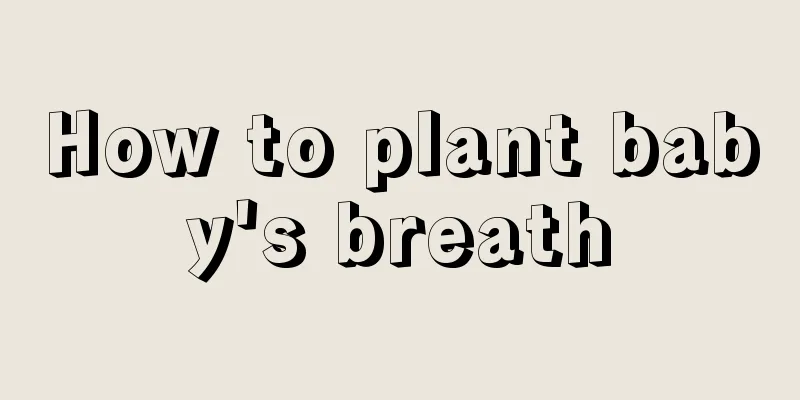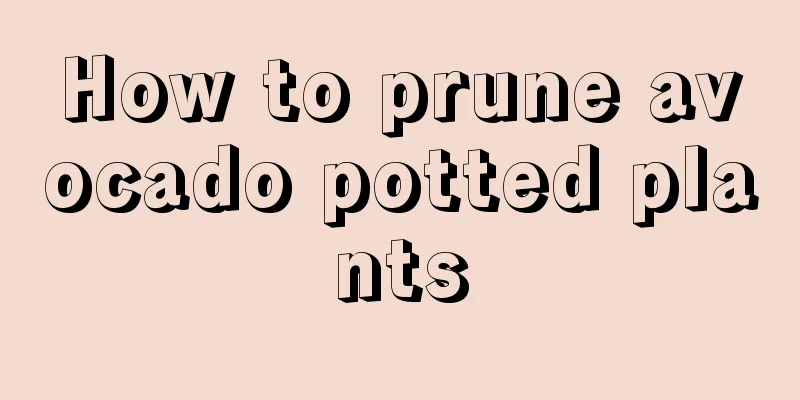Can peach trees be pruned now? How to trim?

|
Pruning is critical to the growth of peach trees, as it not only affects the tree's vigor but also its yield. As the seasons change, fruit farmers are about to enter the period of pruning peach trees. Let’s take a look at whether peach trees can be pruned now. How to trim? 1. Remove the low and keep the high In the past, in order to pursue yield, the poles were fixed at a lower position, resulting in a decrease in the quality of the lower fruits and causing inconvenience to subsequent operations such as spraying, weeding, bagging, and fertilizing. It is now recommended to set the pole at around 60 to 80 centimeters to improve ventilation, light transmittance and fruit quality. 2. Remove competing branches from the main branches to maintain single-axis extension Removing competing branches and maintaining the uniaxial extension of the main branches will help rationalize the tree structure. 3. Remove the rough and keep the fine Directly remove branches that are thicker than 1 cm, and retain branches around 0.5 cm to 0.8 cm as fruiting branches to ensure fruit quality. 4. Go high and keep low The total height of the tree is controlled at about 2-2.5 meters to facilitate operations such as spraying pesticides and picking fruit. 5. Thinning out the branches on the back Thin out the back branches to improve ventilation and light conditions, promote branch renewal, and avoid alternate bearing phenomena. 6. Remove the dense and keep the sparse Thin out the overcrowded branches to facilitate ventilation, light transmission and branch renewal. Pruning should be carried out according to the above principles based on the growth, location and number of branches of each tree. First, observe the growth of trees in the orchard to determine whether they are weak trees, strong trees, or moderately strong trees, and calculate the number of fruiting branches that need to be retained for each tree based on the yield per mu. Taking a moderately strong tree as an example, start pruning from the bottom, remove the branches that are too thick at the bottom, and improve ventilation and light transmission. Then, prune the main branches, remove the overgrown branches above and below the back, and selectively retain the fruiting branches. According to the principle of removing dense branches and leaving sparse branches, if the fruiting branches are too dense, adopt the pruning method of "removing the two sides and leaving the middle", otherwise adopt the pruning method of "removing the middle and leaving the two sides", so that the fruiting branches are arranged in a "fishbone shape". When thinning branches, pay attention to the buds. If there are buds at the base, you can remove them directly. Otherwise, you need to leave stumps and buds when pruning. At the same time, thin out weak branches, diseased and insect-infested branches, and pinch back and rejuvenate the fruit-bearing branches that are beginning to weaken to prevent the fruit-bearing branches from moving outward. Following this series of processes, the peach tree pruning work is basically completed.
|
<<: How many days does it take for coriander to germinate?
>>: How to make plum trees bear more fruit?
Recommend
Key points for apple tree management in July
July is a critical growing period for apple trees...
How to grow single-headed garlic to achieve high yield and quality?
Single-headed garlic is a relatively unique varie...
Can spoiled rice be used as fertilizer? How to ferment it to make fertilizer?
Spoiled rice fertilizer is a very good flower fer...
Wedding flower etiquette: wedding car flower decoration
Wedding car flower decoration - car front The fro...
What to do if strawberries are dormant
Strawberry dormancy The dormancy phenomenon of st...
How much is the yield of Sunshine Rose grapes per mu? What is the investment cost of planting Sunshine Rose grapes?
Yield per mu of Sunshine Rose grapes If the Sunsh...
What are the cultivation methods and precautions for four-season camellia
Four Seasons Camellia Introduction Four-season ca...
Disadvantages and advantages of Shakespeare 2000 rose (is it a vine or a shrub)
Shakespeare 2000 Rose Introduction William Shakes...
How to grow Desert Rose?
Desert rose is a succulent shrub or small tree . ...
How to grow succulent spider plants to make them more vigorous
Pearl Chlorophytum growing conditions Pearl Chlor...
Where to place a rubber tree for good Feng Shui
1. Feng Shui Effect 1. Its most important functio...
Doesn't the fig tree bloom?
1. Whether it blooms Figs do bloom, and as for th...
What are the cultivation methods and precautions for potted lucky bamboo?
How to grow lucky bamboo in a pot Lucky bamboo be...
The buds of azaleas wither. Why do azaleas wither in summer?
1. Exposure to the scorching sun Reason: Azalea c...
How to raise Brazilian beauties
1. Maintenance methods 1. Substrate selection: It...









